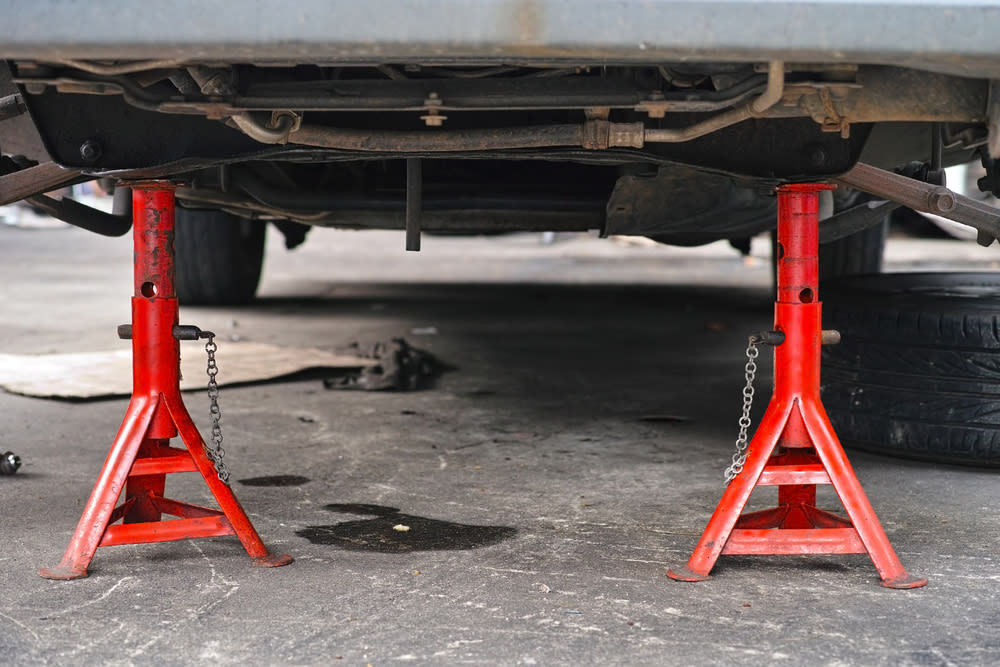

When people think of the words “theft” and “car” together, they usually picture smashed windows, missing audio equipment, and even an entirely missing car. Drivers typically put little stock in the machinery attached to the bottom of the car — specifically the catalytic converter.
The catalytic converter turns dangerous pollutants into harmless gases. It has been a required feature of vehicles’ exhaust system since the 1970s and is located near the engine’s exhaust manifold on most cars. It can be easily seen from underneath a car.
Catalytic converters are sought after because they contain precious metals like platinum, rhodium, and palladium. Thieves can sell the converters to unregulated scrap yards for around $200 each depending on size and the quality of the metal inside. The number of catalytic converter thefts that occur in the United States depends on the varying prices of the metals inside. When prices increases, so do instances of theft.
The cost to replace a catalytic converter ranges anywhere from $500 to over $2000 to replace a catalytic converter. Surrounding part damage can contribute to high replacement costs. The car will not operate properly, nor is it legal to drive without one.
How Do Thieves Steal Catalytic Converters?
Thieves tend to target vehicles with easily accessible catalytic converters, such as pickup trucks and certain SUVs. Cars left for extended periods of time in poorly monitored lots tend to be the most common locations.
It only takes a saw and a few minutes to remove a catalytic converter. In some cases, catalytic converter thieves will use a board to slide themselves beneath a vehicle, or, if time allows, use a jack to lift up the car. Once underneath, the thief saws through the piping on both sides of the converter to pull it off of the car.
How Do You Know Your Catalytic Converter is Missing?
You’ll be able to tell that something’s wrong immediately after turning on the car after your catalytic converter has been stolen. You will notice the following 3 symptoms:
- A loud rumbling or roaring sound will emanate from the engine, which will increase in volume as you press the gas pedal.
- The car will drive rough and feel like it’s sputtering while changing speeds.
- If you check beneath the car from the back side, you will notice a gaping hole in the machinery, near the middle of the exhaust system, as well as pieces of torn-away piping.
How To Prevent Catalytic Converter Theft:
Since converter thieves tend to target cars at ideal locations, most prevention methods surround parking practices. Here are 6 tips to prevent catalytic converter theft.
Park in well-lit areas.
Park close to building entrances or the nearest road in public parking lots. This leaves your car in a location where many people can see it.
If you have a personal garage, keep your car parked inside with the door shut.
Add video surveillance to the area where you regularly park your car.
Install a catalytic converter-specific security device, or have it welded to the car frame. You can also engrave your car’s VIN number to the catalytic converter.
Adjust the security system on your car, if already installed, to activate from vibrations, such as those produced by a saw.
Call the police department first when you notice your catalytic converter has been stolen, and provide any identifying details you can. Also, call local scrap metal yards to notify them of the theft. They can be on the lookout if anyone comes in with a catalytic converter.
Remember: the best way to prevent theft is to make access to your car’s converter as inconvenient and difficult as possible. This means taking preventative measures like smart parking and adding your VIN number to the catalytic converter. Stay on the lookout for increases in theft in your area, and respond accordingly.



